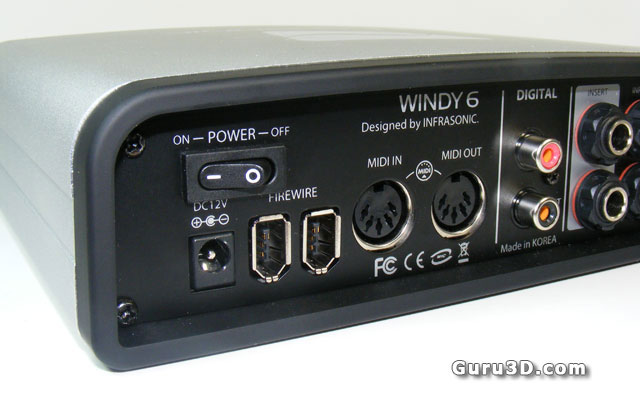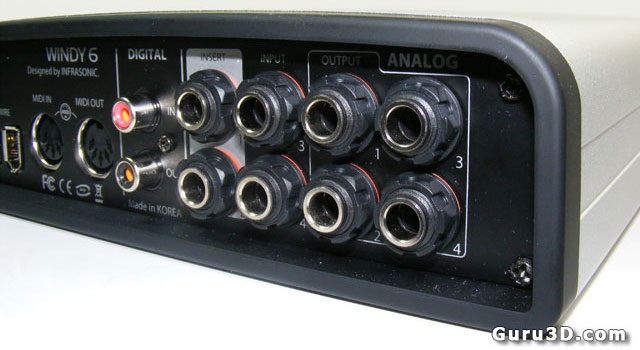A closer look - rear panel
Rear Panel

The rear I/O sections of the Windy 6 are well positioned to provide easy access to all the features available on this interface. The rear panel of the audio interface is very rugged and built very tough. When you snap cables in or remove them there is a very solid feel to the interface. If you have ever been to a gig recording you know how important solid audio gear is; as devices get banged around; cables get tripped over and all manners of abuse on your gear can happen.
Let's take a closer look at the I/O and other sections available on the left side of the interface.

We have the master power switch and power adaptor input for 12VDC.
Beside the power section we have the IEEE1394 FireWire input and output as you can daisy chain multiple Windy 6's together for increased input/output or connect other Firewire interfaces such as the Infrasonic FireWire DeuX interface.
Next in line we have industry standard DIN connectors for MIDI input and output allowing access to 16 channels. These connections allow use of keyboards, synthesizers and Midi signal controllers.
Last in our illustration we have digital S/PDIF input and output for connection, to digital ready devices, such as speaker systems or studio reference monitors. A further note the S/Pdif output is transformer coupled which is typically a preferred system for S/Pdif output.

First up we can see the TRS jacks marked "inserts" this I/O pair allows you to insert any serial effect into the signal chain. Any audio device such as studio effects boxes, guitar stomp boxes, Equalizers, delay units and any other effects.
Each connection has a mono send and return, allowing you to connect two separate mono effects which are common for electric guitar. Alternately you can combine the signals for inserting a stereo effect unit into the chain.
All analog output on the Windy 6 has servo balanced level setting which simply means the outs will adjust levels automatically based on if you're using normal patch cables or if you're using a balanced cable system.
